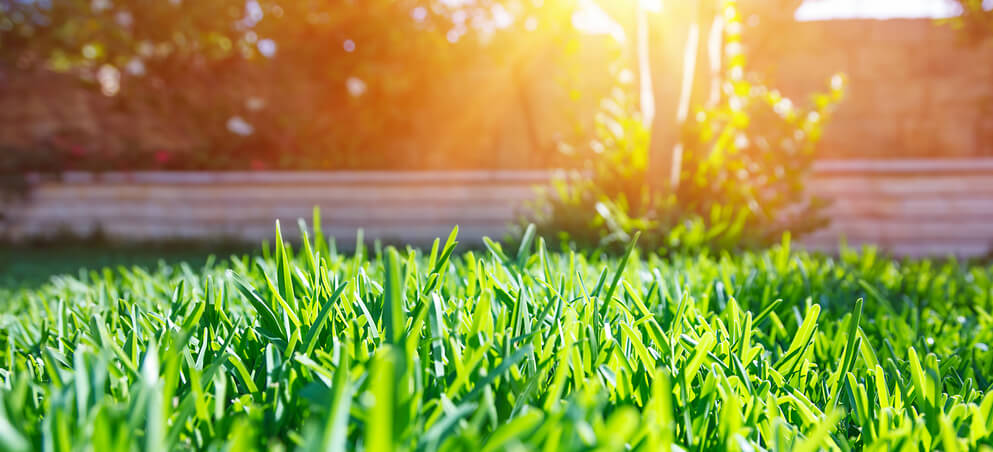
The front lawn of every home speaks a lot about the owner. Everyone wants their yard to be worthy of a feature in a magazine. A luscious green lawn is like an invitation to friends and family to gather for a barbecue cookout. You can, too, have that. Patience and consistency are key.
You’d have to invest considerable time, effort, and money to achieve that perfect green turf worthy of your neighbours’ envy. We’ve consulted with our professional gardeners on how you can do it. This lawn guide will go through the basic steps you need to take to grow your perfect green lawn.
Tools and materials

Before starting the process of growing your lawn, ensure you have all the right tools (like a rake and a spray bottle), as well as the following materials:
- Soil
- Fertiliser
- Grass seeds
Choose the type of soil
Know with what type of soil you’re starting. Some of Australia’s most popular soil types are:
- Sandy soil is a great fit for all kinds of grass because it can warm up quickly. However, some cons are that it tends to wash out quickly. Keep in mind it doesn’t retain water very well.
- Clay soil is a type of heavy soil. When wet, it gets very sticky, and it’s amazing for water retaining. It’s rich in nutrients and has the smallest soil particle in the mixture.
- Silt soil is a powdery substance that helps thicken the soil.
A suitable soil for growing grass would be a mixture of sand, clay and silt, also known as loam soil. Loam soil is the perfect fit for your lawn, as it has good drainage thanks to the soil’s high percentage of sand. This type of soil is good at retaining nutrients and providing good airflow for the grass, which is one of the most important things when growing your green lawn.
Choose the right seeds
After you’ve decided on creating a beautiful lawn, you should know how to plant the grass correctly.
If, by any chance, you are having trouble deciding on a specific type of grass, then certainly check our post on How to Choose the Best Grass Type for Your Lawn. You can find all the specifics about the most popular kinds like Kikuyu, Zoysia grass and more.
Choose the time of the year
The season plays an important role when planting a new lawn. Are you planting during spring? Or are you doing it in the autumn? In both cases, you can have great results. However, there are some differences in the ways you grow the seeds.
- Spring grass planting demands more time before you start applying weed control chemicals. You should wait for at least three mowings before you start using them.
- Autumn grass planting requires some careful planning. The seeds need to germinate completely before the ground freezes.
How to grow a lawn from seed

Step 1. Prepare the soil
Before planting seeds, test the pH level of the soil. The scale goes from 0 to 14. With seven being neutral, anything below it is acidic, and anything above is alkaline.
All kinds of greenery prefer the soil to be on the acidic side of the scale, between 6 and 7. Nutrients are better absorbed in acidic soils. If you find out that your soil isn’t suitable for growing that perfect lawn, you can fix it yourself:
- Soil is too acidic: Add limestone to increase the sweetness.
- Soil is alkaline: Use leaves as mulch or add sulphur.
The grass will need a nice and clean environment to thrive. You can dedicate an hour or two to cleaning the area and preparing the soil for the seeds. Here are the main steps you can take:
- Clean the lawn from debris – Remove any rocks, wood, dead leaves or other debris on the ground. Any debris should be removed and properly disposed of so it won’t get in the way.
- Loosen the soil – Turning the soil at least 10-15 cm is essential. That way, you’ll open space for the seeds to fall deeper into the ground.
- Remove any big clumps of soil and even the area – Break them. Anything larger than half of your fist is too big. Also, sometimes there might be stones covered in dirt that need to go. Use a rake to make the area even so there are no big or small holes.
- Starter fertilisers are always a good idea – Use a fertiliser before you start seeding to give more nutrients to the ground.
Step 2. Spread the lawn seed
Depending on the lawn, and there are different ways to seed it. When planting a lawn from scratch, meaning there is just soil and no growing grass, you should follow some rules to ensure healthy growth for your lawn and proper grass density.
Plant around 15 seeds for every 6 square centimetres – If you overseed an area, seeds will end up fighting for space and nutrition, which will cause thin grass. You can either use a lawn spreader or do the job by hand. The difference is that the lawn spreader will do the job faster. However, if you are planting on any area too small for a lawn spreader, you better stick to manual work.
Step 3. Topdress the lawn
After putting the seeds in the soil, you should cover them with dirt. This should be done gently so as not to hurt the seeds. It’s important not to cover the seeds with more than ⅙ of a centimetre of soil.
Step 4. Water daily
Keep the grass bed moist to increase germination – Daily watering is needed until the grass is at least five centimetres high. Also, it’s essential to keep the roots moist.
Daily watering is necessary until the grass is at least five centimetres tall. Also, it’s important to keep the roots moist.
Step 5. Maintain by mowing the lawn
Once the grass starts growing, cutting it properly becomes the number one priority. Many homeowners ruin their lawns not by watering incorrectly but by mowing the wrong way.
A common mistake is to cut the grass lower than it should be, which leads to turf damage, brownish grass and an unhealthy-looking lawn. To avoid all this, make sure to mow the grass no lower than ⅓ of its size.
Other advice on how to mow a lawn correctly:
- Always mow when the grass is dry. Either cut the grass early in the morning or late afternoon. Never in the heat of the day.
- Mow differently every time. Change the pattern to keep the soil even. Also, grass leans towards the direction that you mow it in. Different patterns will result in more upright grass.
- Clippings are good. Leave them in normal quantities. As long as they don’t form clumps, clippings are a great way to add compost to your lawn.
- Don’t mow as much next to trees and shaded areas. In these places, grass has to fight for more nutrients and light, so it’s better to leave it longer.
- Always keep the blades of the mower sharp. That way, the mower makes sharp cuts and the grass edges look better. A good rule is to buy two blades and use the sharp one while the other is being sharpened.
Need help with your lawn?
We are the right professionals for the job!
Overseeding your lawn

In case the grass grew, but you aren’t happy with the results, you can improve the lawn’s look by overseeding it. Here’s what to do:
- Clean up the lawn – You should remove any debris so it won’t get in the way.
- Mow as short as possible – Before doing anything to the lawn, you should cut the grass as low as possible. That way, you will ensure that most seeds will fall on the ground and not on top of the leaves.
- Loosen the soil in bare spots – You should loosen up the places with no growing grass. That way, the seeds will fall deeper into the soil.
- Seed – After you’ve prepared the lawn, make sure to seed the places you see fit.
Takeaways
Enjoying a lush and green lawn is hard at first, but once you get to the upkeep stage, it all becomes a bit easier. Of course, you can always ask a professional gardener for lawn care advice or assistance in the beginning stages to fully maximise your chances of having beautiful turf and avoid mistakes.







